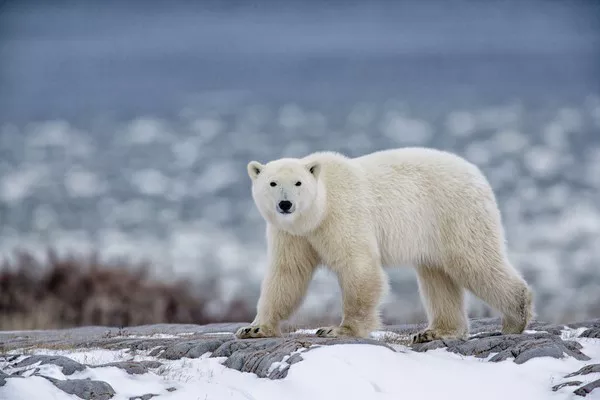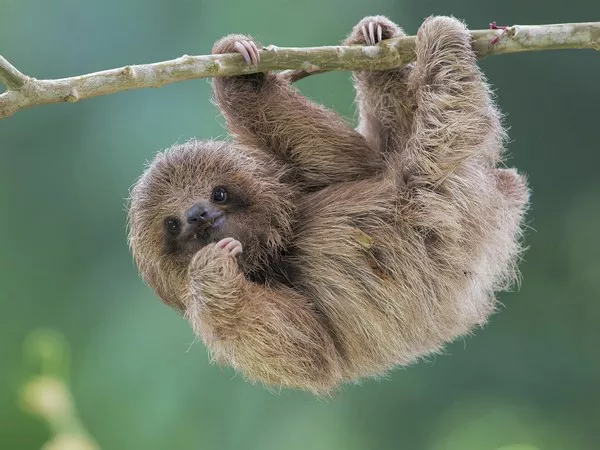Bears are among the most iconic and fascinating creatures on our planet, found in various habitats across the world. From the towering polar bears of the Arctic to the elusive spectacled bears of South America, these magnificent animals captivate our imagination with their strength, agility, and adaptability. In this comprehensive guide, we will explore the diverse array of bear species that inhabit our planet, delving into their habitats, behaviors, and conservation status.
20 Bear Species That Inhabit Our Planet
1. Polar Bear (Ursus maritimus)
The polar bear is perhaps the most iconic of all bear species, renowned for its immense size and stark white fur. Found throughout the Arctic region, these bears are superbly adapted to life on the sea ice, where they hunt seals and other marine mammals for sustenance. Polar bears are excellent swimmers, capable of traversing long distances in search of prey. Unfortunately, polar bears face significant threats due to climate change, which is causing the rapid decline of their sea ice habitat.
2. Brown Bear (Ursus arctos)
The brown bear, also known as the grizzly bear in North America, is one of the most widely distributed bear species, found across Eurasia and North America. These formidable predators are known for their massive size and powerful build, with adult males often weighing over 1,000 pounds. Brown bears inhabit a variety of habitats, including forests, mountains, and tundra, where they feed on a diverse diet of berries, nuts, fish, and small mammals. While some populations of brown bears are thriving, others are threatened by habitat loss and human encroachment.
3. American Black Bear (Ursus americanus)
The American black bear is the most common bear species in North America, found in forests, swamps, and mountains across the continent. Despite their name, black bears can vary widely in color, ranging from black to brown, cinnamon, and even white. These adaptable animals have a varied diet that includes berries, nuts, insects, and occasionally small mammals. While black bear populations are generally stable, they face threats from habitat loss, poaching, and human-wildlife conflict.
4. Asiatic Black Bear (Ursus thibetanus)
The Asiatic black bear, also known as the moon bear, is found across Asia, from the Himalayas to the Russian Far East. These bears are distinguished by their black fur and distinctive white chest markings, which vary in shape and size among individuals. Asiatic black bears inhabit a variety of habitats, including forests, mountains, and grasslands, where they feed on a diet of fruits, insects, and small mammals. Despite their wide range, Asiatic black bears are threatened by habitat loss, poaching, and the illegal wildlife trade.
5. Spectacled Bear (Tremarctos ornatus)
The spectacled bear is the only bear species native to South America, found primarily in the Andean region from Venezuela to Bolivia. These bears are named for the distinctive white or light-colored markings around their eyes, which resemble spectacles. Spectacled bears inhabit a range of habitats, from cloud forests to scrublands, where they feed on a diet of fruits, berries, and vegetation. While spectacled bears are generally solitary and elusive, they face threats from habitat loss, poaching, and human-wildlife conflict.
6. Sun Bear (Helarctos malayanus)
The sun bear is the smallest bear species and is found in the tropical forests of Southeast Asia. These bears are distinguished by their sleek black fur and distinctive golden crescent-shaped markings on their chest. Sun bears have a varied diet that includes fruits, insects, and small mammals, and they are known for their exceptional climbing abilities. Despite their small size, sun bears are threatened by habitat loss, poaching, and the illegal wildlife trade.
7. Sloth Bear (Melursus ursinus)
The sloth bear is native to the Indian subcontinent, where it inhabits forests, grasslands, and scrublands. These bears are named for their slow, lumbering movements and shaggy fur, which helps protect them from insect bites. Sloth bears have a specialized diet that includes insects, especially termites and ants, which they extract using their long, curved claws. While sloth bear populations are relatively stable, they face threats from habitat loss and human-wildlife conflict.
8. Giant Panda (Ailuropoda melanoleuca)
The giant panda is perhaps the most beloved bear species, known for its distinctive black and white fur and bamboo diet. These bears are native to the mountain forests of central China, where they feed almost exclusively on bamboo shoots and leaves. Giant pandas are solitary animals, except during the breeding season, and they spend much of their time foraging for food. Despite conservation efforts, giant pandas remain endangered due to habitat loss and fragmentation.
9. Andean Bear (Tremarctos ornatus)
The Andean bear, also known as the spectacled bear, is the only bear species native to South America, found primarily in the Andean region from Venezuela to Bolivia. These bears are named for the distinctive white or light-colored markings around their eyes, which resemble spectacles. Andean bears inhabit a range of habitats, from cloud forests to scrublands, where they feed on a diet of fruits, berries, and vegetation. While Andean bears are generally solitary and elusive, they face threats from habitat loss, poaching, and human-wildlife conflict.
10. Malayan Sun Bear (Helarctos malayanus)
The Malayan sun bear, also known as the honey bear, is the smallest bear species and is found in the tropical forests of Southeast Asia. These bears are distinguished by their sleek black fur and distinctive golden crescent-shaped markings on their chest. Malayan sun bears have a varied diet that includes fruits, insects, and small mammals, and they are known for their exceptional climbing abilities. Despite their small size, Malayan sun bears are threatened by habitat loss, poaching, and the illegal wildlife trade.
11. Tibetan Blue Bear (Ursus arctos pruinosus)
The Tibetan blue bear, also known as the Himalayan blue bear, is a subspecies of the brown bear found in the Himalayan region of Tibet, Nepal, and Bhutan. These bears are named for the bluish-gray sheen of their fur, which distinguishes them from other brown bear subspecies. Tibetan blue bears inhabit rugged mountain terrain, where they feed on a variety of plant matter, small mammals, and occasionally carrion. While relatively little is known about their population status, Tibetan blue bears face threats from habitat loss and fragmentation.
12. Syrian Brown Bear (Ursus arctos syriacus)
The Syrian brown bear is a subspecies of the brown bear found in the Middle East, particularly in Syria, Turkey, and Iran. These bears are similar in appearance to other brown bear subspecies, with shaggy fur ranging in color from brown to black. Syrian brown bears inhabit a variety of habitats, including forests, mountains, and scrublands, where they feed on a diverse diet of vegetation, berries, insects, and small mammals. While once widespread, Syrian brown bears are now critically endangered due to habitat loss, poaching, and human-wildlife conflict.
13. Formosan Black Bear (Ursus thibetanus formosanus)
The Formosan black bear is a subspecies of the Asiatic black bear found on the island of Taiwan. These bears are characterized by their black fur and distinctive white V-shaped chest markings. Formosan black bears inhabit forested mountain regions, where they feed on a diet of fruits, berries, and small mammals. Despite conservation efforts, Formosan black bears are threatened by habitat loss, poaching, and human-wildlife conflict.
14. European Brown Bear (Ursus arctos arctos)
The European brown bear, also known as the Eurasian brown bear, is a subspecies of the brown bear found across Europe and parts of Asia. These bears are similar in appearance to other brown bear subspecies, with shaggy fur ranging in color from brown to black. European brown bears inhabit a variety of habitats, including forests, mountains, and grasslands, where they feed on a diverse diet of vegetation, berries, insects, and small mammals. While some populations of European brown bears are thriving, others are threatened by habitat loss and human encroachment.
15. Hokkaido Brown Bear (Ursus arctos yesoensis)
The Hokkaido brown bear is a subspecies of the brown bear found on the island of Hokkaido in Japan. These bears are similar in appearance to other brown bear subspecies, with shaggy fur ranging in color from brown to black. Hokkaido brown bears inhabit forested mountain regions, where they feed on a diet of fruits, berries, and small mammals. While relatively little is known about their population status, Hokkaido brown bears face threats from habitat loss, poaching, and human-wildlife conflict.
16. Kamchatka Brown Bear (Ursus arctos beringianus)
The Kamchatka brown bear, also known as the Far Eastern brown bear, is a subspecies of the brown bear found in the Kamchatka Peninsula of Russia. These bears are among the largest brown bear subspecies, with males often exceeding 1,000 pounds in weight. Kamchatka brown bears inhabit a variety of habitats, including forests, mountains, and tundra, where they feed on a diverse diet of vegetation, berries, fish, and small mammals. While relatively little is known about their population status, Kamchatka brown bears face threats from habitat loss, poaching, and human-wildlife conflict.
17. Gobi Bear (Ursus arctos gobiensis)
The Gobi bear, also known as the Gobi grizzly bear, is a subspecies of the brown bear found in the Gobi Desert of Mongolia and China. These bears are adapted to arid desert environments, with a lighter coat color and smaller body size than other brown bear subspecies. Gobi bears feed on a diet of vegetation, berries, and small mammals, and they are known for their ability to dig for water and food in the desert sands. Despite their unique adaptations, Gobi bears are critically endangered due to habitat loss, poaching, and human-wildlife conflict.
18. Kermode Bear (Ursus americanus kermodei)
The Kermode bear, also known as the spirit bear, is a rare subspecies of the American black bear found in the coastal rainforests of British Columbia, Canada. These bears are known for their distinctive white or cream-colored fur, which is caused by a recessive gene. Kermode bears inhabit dense forested areas, where they feed on a diet of salmon, berries, and vegetation. While relatively little is known about their population status, Kermode bears face threats from habitat loss, climate change, and human-wildlife conflict.
19. Ussuri Brown Bear (Ursus arctos lasiotus)
The Ussuri brown bear, also known as the Siberian brown bear, is a subspecies of the brown bear found in the forests of Russia, China, and Korea. These bears are among the largest brown bear subspecies, with males often exceeding 1,000 pounds in weight. Ussuri brown bears inhabit dense forested areas, where they feed on a diet of vegetation, berries, fish, and small mammals. While some populations of Ussuri brown bears are thriving, others are threatened by habitat loss and human encroachment.
20. Marsican Brown Bear (Ursus arctos marsicanus)
The Marsican brown bear, also known as the Apennine brown bear, is a subspecies of the brown bear found in the central Apennine Mountains of Italy. These bears are among the smallest brown bear subspecies, with males typically weighing less than 400 pounds. Marsican brown bears inhabit dense forested areas, where they feed on a diet of vegetation, berries, and small mammals. While once widespread, Marsican brown bears are now critically endangered due to habitat loss, poaching, and human-wildlife conflict.
In conclusion, bears are a diverse and fascinating group of mammals that play a vital role in ecosystems around the world. From the icy tundra of the Arctic to the steamy jungles of Southeast Asia, bears have adapted to a wide range of habitats and lifestyles. However, many bear species face significant threats from habitat loss, poaching, and human-wildlife conflict. Conservation efforts are crucial to ensuring the survival of these iconic animals for future generations.
You Might Be Interested In:

























